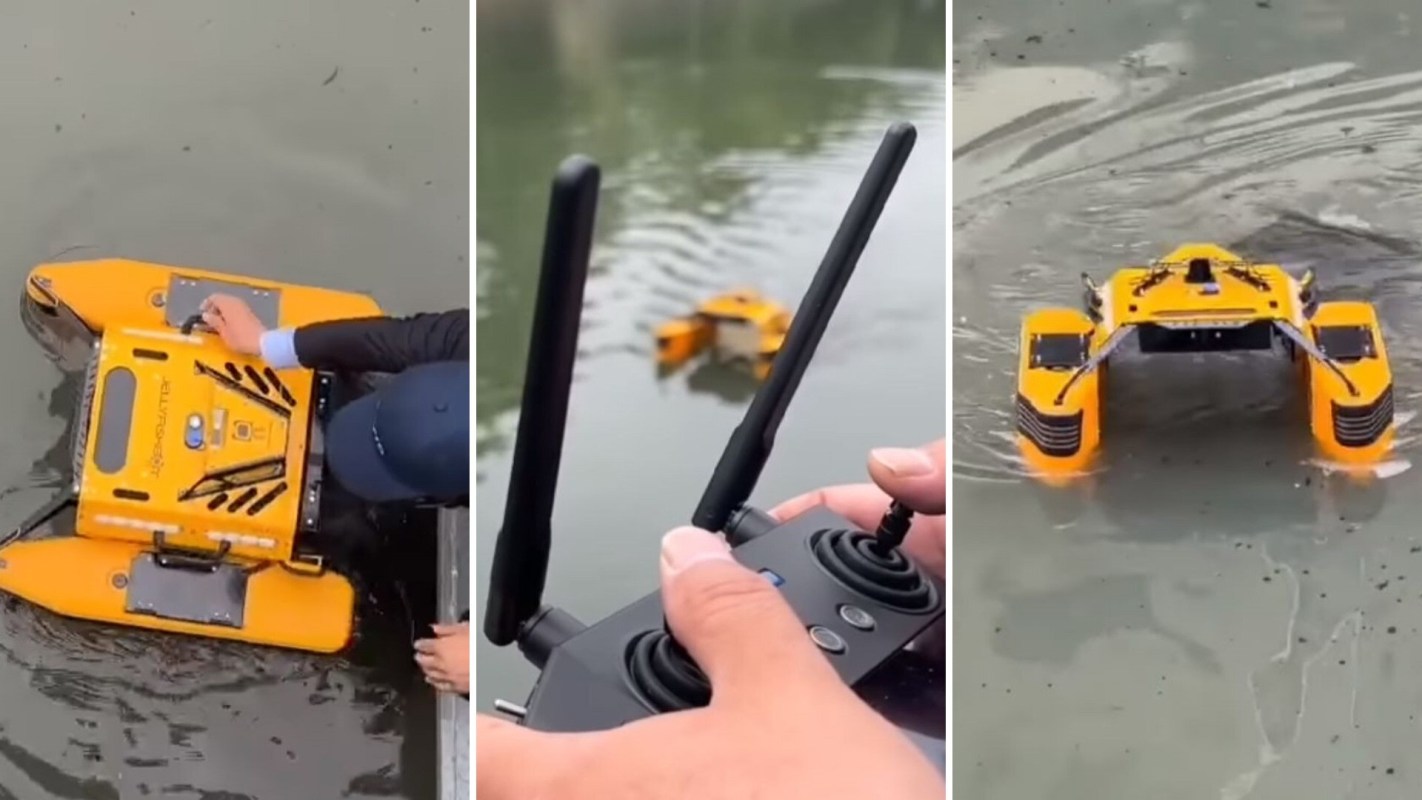Cleaning up polluted waterways can be a daunting prospect. But thanks to this invention from a French robotics company, the process has never been easier — or more adorable.
The Jellyfishbot is an autonomous aquatic robot that collects waste and oil from polluted water, like a cute little Roomba of the sea, while also having the capability to take underwater measurements for research purposes.
The robot is the work of the French company IADYS, which describes its mission as designing "robotics and artificial intelligence in service of marine decontamination." The company was founded in 2016.
The high-tech Jellyfishbot comes equipped with a removable net to scoop up trash, multidirectional thrusters, two batteries that supply it with 6-8 hours of charge, an HD surface camera, warning lights, and a buzzer if it gets too close to something. It also has an optional remote control for non-autonomous use.
The Jellyfishbot harkens to another similar project: Baltimore's Mr. Trash Wheel — a much larger, even more anthropomorphized (thanks to the large googly eyes) version of the same idea.
Mr. Trash Wheel, a local celebrity on the Baltimore waterfront, is a semi-autonomous trash collector that helps to clean up the Baltimore harbor and surrounding waters, along with his family, which includes Professor Wheel, Capt Trash Wheel, and Gwenda The Good Wheel of the West.
However, while Mr. Trash Wheel and company are confined to one location, there is a whole fleet of Jellyfishbots that have been deployed throughout the world. Currently, according to IADYS, the Jellyfishbot is already cleaning up polluted water in cities such as Cannes, Marseille, Monaco, Saint-Tropez, Dunkirk, Singapore, Tokyo, and many more.
There are currently over 170 trillion pieces of plastic in the ocean, according to one study, and the problem is only getting worse. Luckily, humans are trying various methods of reversing course and saving marine wildlife from the adverse effects of plastic pollution. But in the meantime, the growing fleet of Jellyfishbots has their work cut out for them.
Join our free newsletter for weekly updates on the coolest innovations improving our lives and saving our planet.









